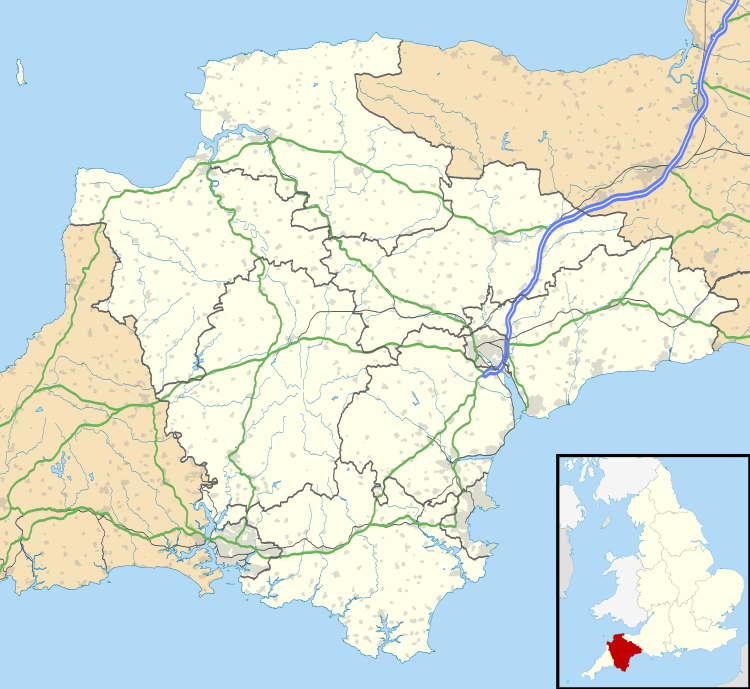Plymouth Gin
 | |
| Type | Gin |
|---|---|
| Manufacturer | Pernod Ricard |
| Country of origin | England |
| Introduced | 1793 |
| Alcohol by volume | 41.2% |
| Proof (US) | 72 (U.S. 83) |
Plymouth Gin is a Protected Geographical Indication that pertains to any gin distilled in Plymouth, England.[1] Today, there is but one brand, Plymouth, which is produced by the Black Friars Distillery. The Black Friars Distillery is the only remaining gin distillery in Plymouth, in what was once a Dominican Order monastery built in 1431, and opens onto what is now Southside Street. It has been in operation since 1793. [2] The established distilling business of Fox & Williamson began the distilling of the Plymouth brand in 1793. Soon, the business was to become known as Coates & Co., which it remained until March 2004. In 1996, the brand was sold by Allied-Lyons to a management group headed up by Charles Rolls who reinvigorated it. [3] After turning the company around, they sold it in 2005 to the Swedish company V&S Group, who also made Absolut Vodka. The brand is now owned and distributed by the French company Pernod Ricard as a result of its purchase of V&S in 2008.
Recipe
The Plymouth Original Strength brand of gin is 41.2% ABV. It is different and slightly less dry than the much more common London style of gin, purportedly due to a higher than usual proportion of root ingredients, which bring a more 'earthy' feel to the gin as well as a softened juniper flavour. There is also a 'navy strength' variety which is 57% ABV (100° English proof), being the traditional strength demanded by the British Royal Navy. [4] A 47% ABV (94 U.S. proof) version is distributed worldwide.
Plymouth also produces a sloe gin, but has discontinued its Fruit cups and Damson liqueur.
Historical background

Gin, originally being a relatively cheap alcoholic beverage, was bought by the poor and caused considerable social problems, illustrated by the engraving 'Gin Lane' by Hogarth in 1751. The global deployment of the British Royal Navy led to the renown and wide consumption of the product. In British India, it was mixed with the tonic water consumed for the anti-malarial properties of quinine, which led to the creation of the Gin and Tonic.[5]
Plymouth Gin was very popular in the first part of the 20th century. 23 gin based cocktail recipes in the Savoy book of cocktails name Plymouth Gin specifically. It was a tradition in the Royal Navy that all newly commissioned vessels receive a "Plymouth Gin Commissioning kit", a wooden box containing two bottles of navy strength Plymouth gin and glassware.[6]
Plymouth Gin is traditionally used in the historic Sailor's celebratory drink Mahogany composed of gin beaten into warmed black treacle.
Packaging

In 1998, the brand was relaunched by the new management team. The new packaging involved a re-creation of the original bottle and included a thirsty monk inside the bottle. It was said that when the monk's feet 'got dry', it was time for a new bottle. It was also restored to its original strength of 41.2%, and a Navy Strength of 57% introduced to remind drinkers that the brand was the official gin for the British Royal Navy. [7]
In mid-2006, the bottle was changed by new owners V&S to an Art Deco style. The front of the bottle depicted the ship, Mayflower, based upon the fact that when the Pilgrim Fathers set out for their journey to the new world, bad sea conditions and damage forced them to put into Plymouth harbour for shelter and essential repairs. Local tradition has it that some of them stayed in the monastery, which later became the distillery.[2] In the same way as the monk's feet, one can say it's time to get a new bottle when the Mayflower 'no longer sails on gin'.
In January 2012, the packaging was again redesigned, this time returning to a more classical "shaving bottle" shape with a slightly green tint and the words "Est. 1793 / Black Friars Distillery" embossed on the front.
Accolades
Plymouth's most recent performance at international spirit ratings competitions has tapered somewhat, but it has garnered a substantial array of awards over the years, including two double gold, two gold, one silver, and one bronze medal at the San Francisco World Spirits Competition between 2006-2011.[8]
References
- ↑ E.U. Definitions of Categories of Alcoholic Beverages 110/2008, M(b), 2008
- 1 2 "Plymouth Gin". Attractions in Devon. Retrieved 2009-02-22.
- ↑ http://www.brandchannel.com/features_profile.asp?pr_id=2
- ↑ "Plymouth Navy Strength". Retrieved 2010-10-06.
- ↑ BBC News. "The History of Gin (and Tonic)".
- ↑ "Gin Ahoy! A Navy-Strength Fleet Arrives". The New York Times. 21 February 2012. Retrieved 2012-09-25.
- ↑ http://www.brandchannel.com/features_profile.asp?pr_id=2
- ↑ Proof66. "Accolades Page for Plymouth".